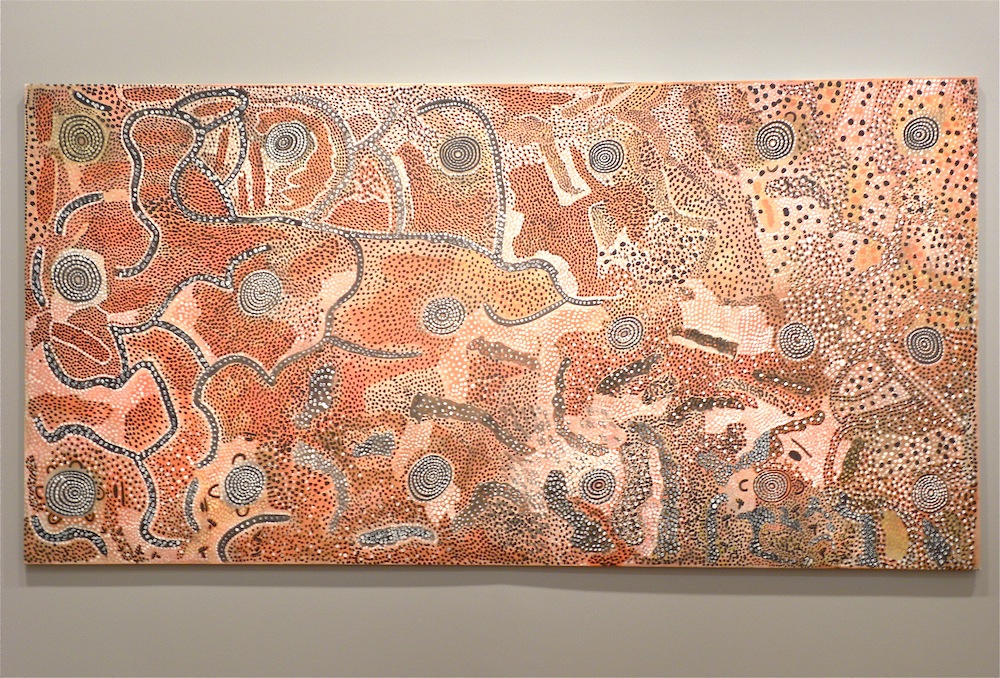
Johnny Warangkula Tjupurrula Pintupi/Luritja (c.1925–2001) – Kampurarrpa, 1974 – 168.5 x 330.6 cm – Synthetic polymer paint on canvas © the Artists and © IDAIA
Tjukurrtjanu: Origins of Western Desert Art
This is a touring exhibition curated by the National Gallery of Victoria in partnership with Papunya Tula Artists Pty Ltd in 2011. It features 200 of the first paintings produced at Papunya in 1971 to 1972, now internationally recognised as one of the most important events in Australian art history.
It is interesting to look back at the humble beginnings of the Papunya Tula movement and reflect on the strength and perserverence of generations of Aboriginal Australian people who have safeguarded the survival and development of their culture. Papunya, situated 240kms north west of Alice Springs, was established in the 1950s to take Aboriginal people away from their traditional life and assimilate them into white Australian society. From the outset this settlement was plagued by poor living conditions, health problems, and tensions between various tribal and linguistic groups.
The course of history was changed at Papunya by the arrival of art teacher Geoff Bardon, aged 30, who had grown up in Sydney and got his first job teaching art in Gunnedah in western NSW. Following his interest in Aboriginal people he went to the Northern Territory and was appointed to the Papunya Special School at the start of 1971…he is reported to have said that no-one else wanted the job. In Papunya he found a group of people “oppressed by a sense of exile from their homelands and committed to remain where they were by the direction of the Commonwealth Government…it was a brutal place, with a feeling of oppressive and dangerous racism in the air…crippled, maimed and disease ridden children and drunken men and women wandered about aimlessly.” (Geoffrey Bardon, Papunya Tula, Art of the Western Desert, J.B. Books, Adelaide, 1999)
Bardon surprised and irritated his white colleagues by engaging closely with the Aboriginal people, going hunting with them; eating with them in the settlement canteen; inviting them to his house and showing genuine interest in their creation stories and spiritual beliefs. Bardon had brought with him painting supplies including brushes, boards and tubes of acrylic paint which he encouraged his students to use. Evidently he worked very hard to learn the principal languages of the settlement and eventually gained the trust of both his students and their parents. Bardon describes in his memoirs how one night a group of Aboriginal men came to his house and very tentatively showed him a rough design of the honey ant dreaming that they wanted to paint on the school wall. This moment was the fist public affirmation of Aboriginal culture at Papunya. The first mural project was more about relieving boredom however it quickly evolved into a platform for genuine cultural expression and in that first year the male elders of Papunya painted 600- 800 works. These works were the first visual translations of sacred Aboriginal lore and initiation which sparked the greatest art revolution on Australian soil.
There are over fifty of the original paintings from Papunya made by Luritja, Pintupi , Warlpiri and Anmatyerr men, permanently on display at the National Gallery of Australia, Canberra.
Catherine Hickson, Assistant Curator